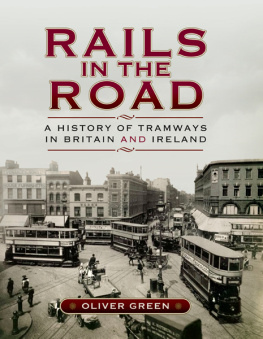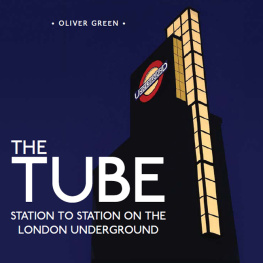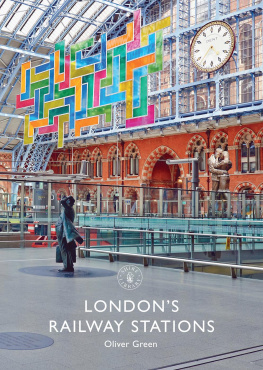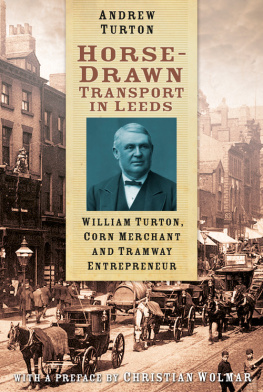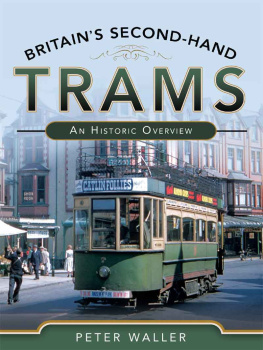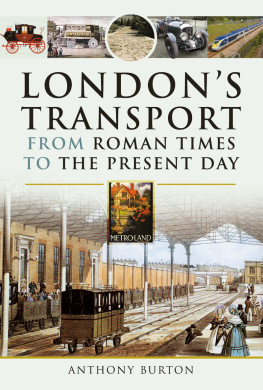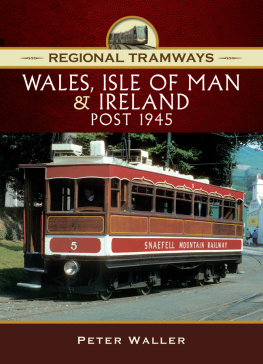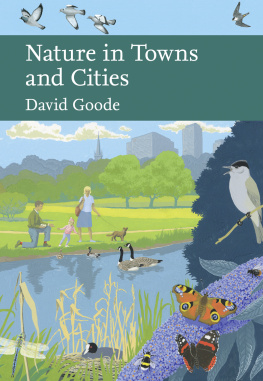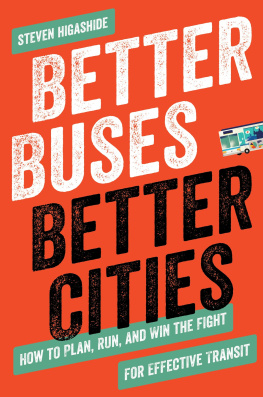First published in Great Britain in 2016 by
Pen & Sword Transport
An imprint of Pen & Sword Books Ltd
47 Church Street, Barnsley, South Yorkshire S70 2AS
Copyright Oliver Green 2016
The right of Oliver Green to be identified as the author of this work has been asserted by him in accordance with the Copyright, Designs and Patents Act 1988. All rights reserved. No part of this publication may be reproduced or transmitted in any form or by any means, electronic or mechanical, including photocopy, recording or any information storage and retrieval system, without the prior written permission of the publisher, nor by way of trade or otherwise shall it be lent, re-sold, hired out or otherwise circulated without the publishers prior consent in any form of binding or cover other than that in which it is published and without a similar condition including this condition being imposed on the subsequent purchaser.
ISBN: 978 1 47382 223 8
PDF ISBN: 978 1 47386 941 7
EPUB ISBN: 978 1 47386 940 0
PRC ISBN: 978 1 47386 939 4
Pen & Sword Books Ltd incorporates the imprints of Pen & Sword Archaeology, Atlas, Aviation, Battleground, Discovery, Family History, History, Maritime, Military, Naval, Politics, Railways, Select, Social History, Transport, True Crime, and Claymore Press, Frontline Books, Leo Cooper, Praetorian Press, Remember When, Seaforth Publishing and Wharncliffe.
For a complete list of Pen & Sword titles please contact
Pen & Sword Books Limited
47 Church Street, Barnsley, South Yorkshire S70 2AS England
E-mail:
Website: www.pen-and-sword.co.uk
Design and typesetting
by Juliet Arthur, www.stimula.co.uk
Printed and bound in India by Replika Press Pvt. Ltd.
CONTENTS

The greatest horse drawn city. Detail from an atmospheric street scene in Victorian London, looking down Pentonville Road towards the gothic towers of St Pancras station and hotel at sunset. When John OConnor painted this view in 1884 the horsecar line here had just opened. A woman is signalling with her parasol to stop a tram heading down the hill towards Kings Cross, while another car is approaching, assisted on the climb by an extra trace horse. The white horse on the left has helped pull one tram up the hill to the Angel, and is being taken back down by the trace boy in readiness for the next ascent. Museum of London
INSPIRATION AND ACKNOWLEDGEMENTS
R esearching and writing Rails in the Road has covered an interesting two-year period. When I started work in 2014, the UKs latest tramway was about to open in Scotland. Edinburgh Tram was already years behind schedule, way over budget and considerably scaled back from the original project plans. Two years later, as I finished writing, the full public inquiry into what went wrong there had still not been completed and reported back.
But other light rail infrastructure has continued elsewhere in England and Ireland, with extensions and improvements to the Manchester, Birmingham, Nottingham and Dublin tram schemes making progress. Sheffield has just received Britains first tram/train for testing. None of these developments are happening fast enough, but neither is it all doom and gloom in the wake of past mistakes and continuing economic uncertainty.
UK light rail is steadily improving and the more I looked at the history of tramways over the last 150 years both in Britain and elsewhere, the more ups and downs came to light. Like most historical narratives, this is not a straightforward story of progress and it would be unwise to predict where we are going next.
Transport policy affects us all and has implications for the environment, town planning, housing provision, air quality and energy use as well as everybodys personal mobility, health and lifestyle. Trams and light rail can play an important part in all of this and understanding their role in the past is essential to help us plan, shape and build our future, particularly in cities.
I would like to thank all those whose knowledge and research have encouraged my thinking about Rails in the Road. Early chats with tramway historians Ian Yearsley and Alan Brotchie were particularly helpful in getting me started, and I am also grateful for the wise insights of others who are no longer with us, notably Winstan Bond and John Price. Of authors whose work features in the further reading list, I would particularly recommend John P. McKays Tramways and Trolleys, still the best wide-ranging academic study of tramway development in Europe forty years after publication. The late Theo Barker and Michael Robbins magisterial two volume History of London Transport, long out of print, is also still essential reading. More recently, Michael Corcorans engaging history of Dublins trams, Through Streets Broad and Narrow, stands out for showing an awareness of the wider social and economic history context so often ignored by specialist tram studies that concentrate obsessively on vehicles and technicalities.
We should all be grateful for the surviving work of the largely anonymous photographers who have recorded the rise and fall of the urban tram. Selecting images to give a broad coverage within the pages of one book has been a demanding but fascinating task. Picture credits have been included wherever possible, and I must apologise in advance for any personal acknowledgements that have been omitted. I am grateful to John Scott Morgan at Pen & Sword Books Ltd for commissioning Rails in the Road and to Jodie Butterwood for overseeing editorial and production. My thanks also go to Janet Wood for editing my manuscript so effectively and to the designer, Juliet Arthur, for so creatively marrying the final text and chosen images in the layout of the book.
Now that rails have been back in the streets of some of our cities for twenty-five years, it is surely time for a more detailed study of the impact trams are having second time around and serious consideration of whether the light rail renaissance should be encouraged. This is one for Lord Adonis and his new National Infrastructure Commission, created by the Government in 2015.
Oliver Green
Oxford, March 2016
IMAGE CREDITS
I have used nearly 500 images in this book. Many of these are from my personal collection of early commercial postcards and ephemera, augmented by scans and originals from many other sources, notably the wide-ranging stock of Ray Woodmore ().
Seventy images come from the London Transport Museums extensive digital archive, which can be accessed online at www.ltmcollection.org. My thanks to my colleagues there, Caroline Warhurst and Simon Murphy, for making high resolution scans available for publication. These images are identified on individual picture captions as LTM/TfL, and I am grateful to London Transport Museum Director Sam Mullins for permission to use them. As an LTM Research Fellow I am also looking beyond the capital this time.
My thanks to museum sector colleagues elsewhere who have helpfully made high quality images freely available, notably Finbarr Whooley, Director of Content at the Museum of London, Emma Williams and Karl Morgan at Swansea Museum, Laura Waters, Curator of Collections at the National Tramway Museum, Crich and Paul Jarman, Assistant Director of Transport and Industry at Beamish, the Living Museum of the North. Pauls website beamishtransportonline.co.uk gives a regular visual update of restoration and development on the museums working tramline. See also the Crich Tramway Village blog for news of the National Tramway Museums activities on www.tramway.co.uk.
Most of the recent photographs of current light rail operations were taken by me over the last six years (identified on the captions as OG). Special thanks go to photographer Peter Stubbs for letting me use his night shot of Edinburgh trams (see more at
Next page
